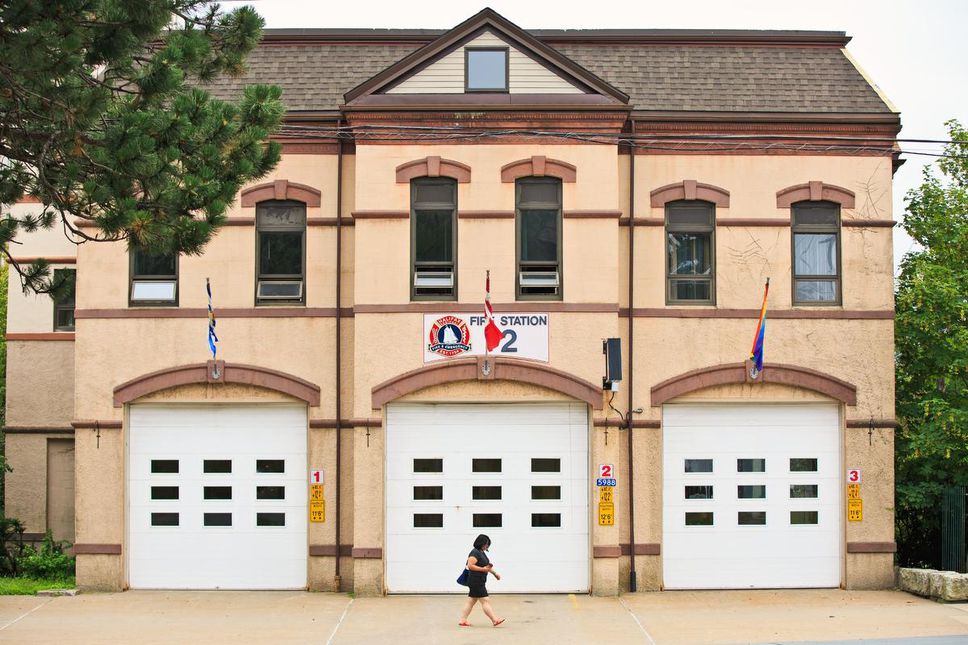The Morris Street Engine House has been declared a municipal heritage property!
#Halifax’s Fire Station #2, as it is also called, was built 1907-08 of reinforced concrete.
Here's the story!
#nspoli @HFXFireHistory @HRMFireNews @hfxfire @HFXFirefighters @hfxgov @MikeSavageHFX

#Halifax’s Fire Station #2, as it is also called, was built 1907-08 of reinforced concrete.
Here's the story!
#nspoli @HFXFireHistory @HRMFireNews @hfxfire @HFXFirefighters @hfxgov @MikeSavageHFX


Concrete is a mixture of aggregates and paste. The aggregates are sand and gravel or crushed stone; the paste is water and portland cement. (The terms cement and concrete are often used interchangeably, but cement is actually an ingredient of concrete...
#nspoli
#nspoli

...Cement is the glue that holds concrete together.)
Reinforced concrete means the concrete is poured over a frame, usually steel bars, that give the structure greater strength.
#nspoli
Reinforced concrete means the concrete is poured over a frame, usually steel bars, that give the structure greater strength.
#nspoli

Concrete’s prominence as a building material emerged during the early-twentieth century with the creation of reinforced concrete.
#nspoli
#nspoli

Not only were the fire station’s walls and piers made from concrete and steel bars, but the face work and mouldings were also constructed entirely of concrete. The station’s appearance today is largely unchanged from 1908.
#nspoli
#nspoli

The fire station, the last in Halifax to house horses, was built by George B. Low, one of Halifax’s pioneers in concrete building construction. His proposal for a concrete fire station was unique and had the added advantage of being the lowest-cost option.
#nspoli
#nspoli

Low, who was born in Scotland and immigrated to Canada in 1885, also built #Halifax’s first fully concrete building in 1903, the A.M. Bell building on Granville St.
#nspoli
#nspoli

A.M. Bell was a retailer that sold, among many other things, #NovaScotia grindstones from #PictouCounty (
#nspoli
https://twitter.com/MiningNS/status/1265241384950382595). Their name is still seen on the building today.
#nspoli

Low also built the Bengal Lancers building on Bell Road and a number of other buildings in #Halifax.
Low partnered with firefighter William B. Fidler who designed the building.
#nspoli
Low partnered with firefighter William B. Fidler who designed the building.
#nspoli

#Halifax’s Union Fire Club was founded in 1754, making it the oldest fire service in Canada. The service continued to operate relatively unchanged until the late-1800s when a dispute between the City and the volunteer force ultimately lead to the creation of the...
#nspoli
#nspoli

...#Halifax Fire Department in 1896. The department’s establishment led its transition from part-time to full-time firefighters by the end of 1919.
In addition to being an active fire station, Morris Street Engine House is also a bit of a tourist attraction.
#nspoli
In addition to being an active fire station, Morris Street Engine House is also a bit of a tourist attraction.
#nspoli

A collection of the department’s historical documents, photographs and artifacts is stored and displayed there.
Our thanks to NS firefighters for the vital service they provide to Nova Scotians.
#nspoli @HFXFireHistory @HRMFireNews @hfxfire @HFXFirefighters @hfxgov @MikeSavageHFX

Our thanks to NS firefighters for the vital service they provide to Nova Scotians.
#nspoli @HFXFireHistory @HRMFireNews @hfxfire @HFXFirefighters @hfxgov @MikeSavageHFX


• • •
Missing some Tweet in this thread? You can try to
force a refresh



























